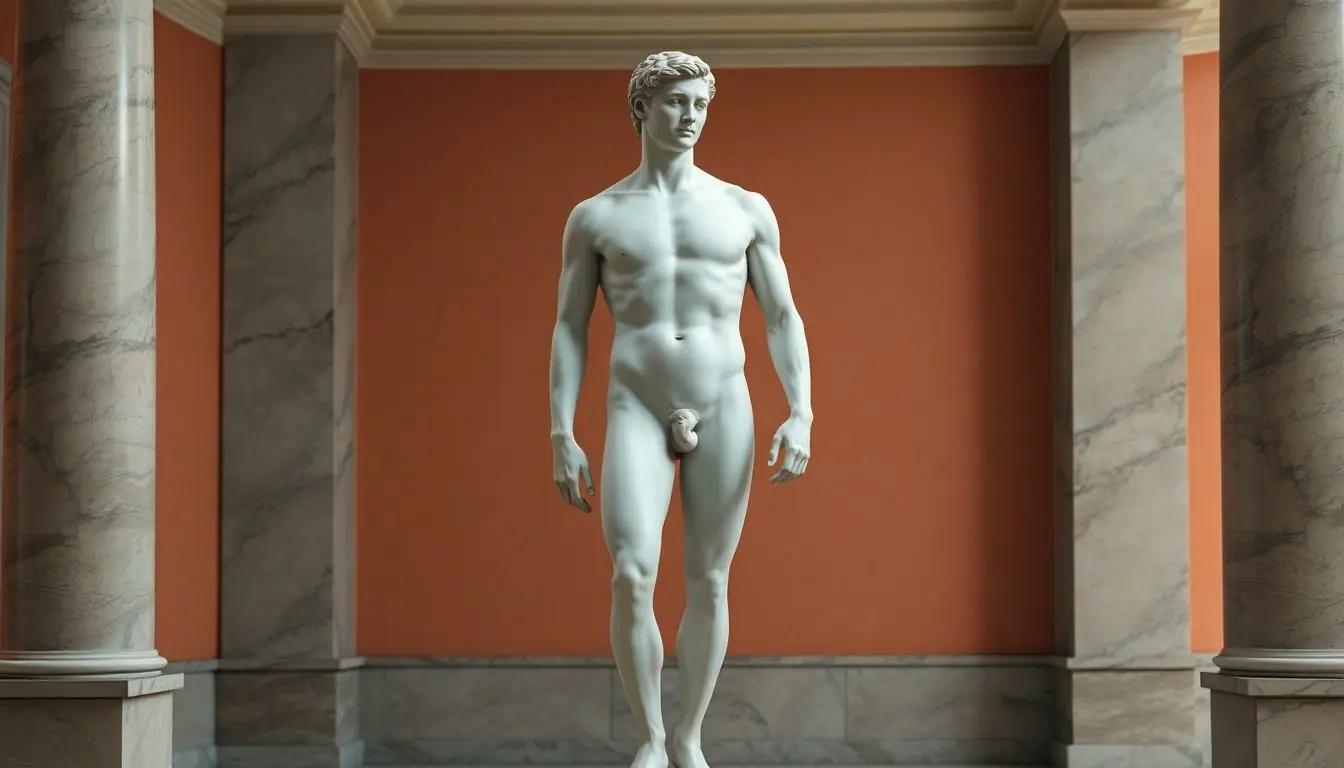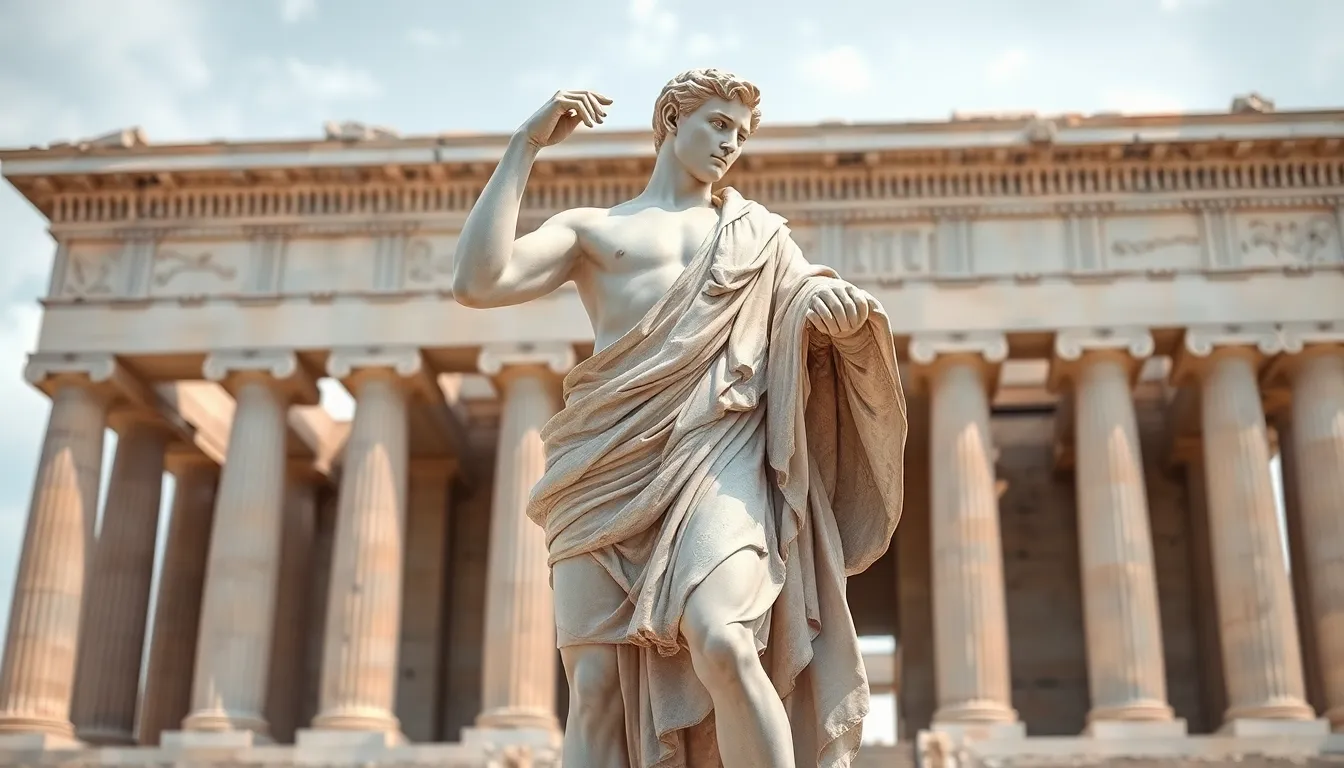Classical nude art is more than just a feast for the eyes; it’s a celebration of the human form that’s been captivating audiences for centuries. From the chiseled physiques of ancient Greece to the soft curves of Renaissance masterpieces, these artworks tell stories that transcend time. They invite viewers to appreciate beauty in its most natural state, reminding us that nudity isn’t just skin deep—it’s an exploration of humanity itself.
But don’t let the term “nude” fool you. This genre isn’t just about bare bodies; it’s a playful dance between art and philosophy. It sparks conversations about aesthetics, culture, and even the occasional awkward giggle. So grab a glass of wine, settle into your favorite chair, and prepare to dive into the world of classical nude art. Who knew appreciating beauty could be this much fun?
Table of Contents
ToggleOverview of Classical Nude Art
Classical nude art emerged as a significant genre during ancient Greece and Rome. Artists embraced the human form as a subject of beauty and expression, celebrating physical ideals. Sculptures like the “Venus de Milo” and paintings such as Botticelli’s “The Birth of Venus” showcase the elegance of the nude figure. Classical nude art often illustrates themes of mythology, philosophy, and the human condition.
Many renowned artists contributed to this genre, including Michelangelo and Raphael. Their works reflect a deep understanding of anatomy and proportion, elevating the representation of the nude body. Throughout the Renaissance, such representations gained prominence, aligning with humanist ideals that emphasized individual beauty and emotion.
Philosophers like Plato influenced artists by presenting the concept of ideal forms. These ideas encouraged creators to explore the spiritual and philosophical implications of nudity. Subsequently, classical nude art transcended the mere representation of the body, inviting discussions on ethics, masculinity, and femininity.
In many instances, classical nude art served as a platform for artists to challenge societal norms. Artists interacted with viewers by provoking thought on issues like morality and desire, encouraging a multifaceted interpretation of their work. This dialogue between the artwork and audience established lasting connections between art and life.
Today, the legacy of classical nude art remains evident in contemporary works. Artists continue to draw inspiration from its themes and techniques, ensuring that the appreciation of the human form endures. Various exhibitions, art forums, and academic discussions further foster interest in this captivating genre.
Historical Context

Classical nude art reflects a rich historical narrative, showcasing the evolution of artistic representation from antiquity to the Renaissance. This genre reveals the enduring fascination with the human form across cultures and eras.
Origins of Nude Art in Antiquity
Nude art emerged prominently in ancient Greece and Rome, where it signified beauty, strength, and humanism. Greek sculptors like Phidias and Praxiteles crafted masterpieces that celebrated physical perfection and harmony. Statues such as the “Discobolus” exemplified athleticism while embodying ideals of symmetry and proportion. In Roman times, nudity conveyed both public and private ideals through works like the “Venus de Milo.” These artworks aimed to reflect not just aesthetic preferences but also philosophical beliefs about the human condition and divinity.
Renaissance Influence on Nude Art
During the Renaissance, artists like Michelangelo and Raphael advanced classical themes, elevating the nude figure to new heights. This period emphasized anatomical precision and emotional expression, marrying form with meaning. Iconic pieces, such as Michelangelo’s “David,” showcased muscularity and detail, embodying the spirit of Renaissance humanism. Artists often referenced classical traditions to inspire allegory and narrative depth. The themes of mythology and spirituality resurfaced, allowing for complex discussions about humanity and divinity through nude representations.
Prominent Artists and Their Contributions
Classical nude art showcases the extraordinary talents of numerous artists. Notable figures from history have made significant impacts in this genre.
Michelangelo’s Masterpieces
Michelangelo exemplified the fusion of physicality and emotion. His work on the “David” sculpture highlighted impeccable mastery of human anatomy. Artists recognize this marble statue as a divine representation of beauty and strength. “The Creation of Adam” fresco, located on the Sistine Chapel ceiling, captures the profound connection between humanity and divinity. Skillfully, Michelangelo infused dynamic poses and expressive features, inviting viewers to contemplate deeper themes. Each masterpiece invites admiration for its technical skill and emotional depth and resonates with the Renaissance ideals of humanism.
Titian’s Approach to the Human Form
Titian revolutionized the portrayal of the human body through splendid use of color and composition. His painting “Venus of Urbino” showcases vibrant hues that celebrate the female form in a sensual yet dignified manner. Every brushstroke reflects his commitment to capturing natural beauty and intimate realism. Additionally, Titian’s nudes often convey narratives rich with emotion and complexity, stimulating thought about desire and affection. Artists and scholars continue to study his innovative techniques, recognizing his ability to breathe life into canvas. Overall, Titian’s contributions resonate within the genre, marking him as a pivotal figure in the history of classical nude art.
Techniques and Styles in Classical Nude Art
Classical nude art showcases various techniques and styles that enhance the representation of the human form.
Use of Light and Shadow
Light and shadow play crucial roles in classical nude art. Artists like Caravaggio utilized chiaroscuro to create depth and emphasize anatomical details. This technique draws attention to contours and highlights, enhancing the emotional impact of the artwork. Botticelli employed softer lighting to evoke a sense of grace and ethereality, bringing figures to life with delicate transitions. Mastery of light not only adds dimension but also influences the viewer’s perception of beauty and form.
Composition and Form
Composition and form are central to the presentation of nude figures in classical art. Artists carefully arranged elements to guide the viewer’s gaze and create a harmonious balance. Michelangelo’s figures exhibit dynamic poses that convey movement and energy while ensuring anatomical proportions are meticulously rendered. The classical triangle composition often appears, leading the eye along a path of aesthetic pleasure. Such thoughtful structuring fosters a deeper emotional connection between the viewer and the art, reinforcing the narrative flowing through the artwork.
Cultural Significance of Classical Nude Art
Classical nude art, appearing prominently in the cultural tapestry of history, signifies much more than mere representation of the human body. Artists utilized the nude form to explore complex themes, including beauty, morality, and human emotions. Ancient Greek and Roman sculptures celebrated the idealized human physique, serving as visual narratives of strength and perfection.
Philosophical ideas like those of Plato influenced these representations, offering insights into the spiritual dimensions of nudity. The interplay between the physical and metaphysical resonates deeply in works that confront viewers with their own ideals and reflections. Pieces like the “Venus de Milo” embody this connection, combining aesthetic beauty with deeper existential queries.
During the Renaissance, artists like Michelangelo took these themes further, emphasizing emotional resonance alongside anatomical precision. A sense of vitality permeates his sculptures, inviting contemplation of humanity’s divine and earthly qualities. Michelangelo’s “David” encapsulates this blend of strength and vulnerability, becoming an iconic representation of personal and cultural identity.
In addition, the genre catalyzed conversations about societal norms. Works provoked viewers to engage with challenging topics related to desire and morality. Titian’s “Venus of Urbino” demonstrates this engagement, balancing sensuality with dignity, thereby reshaping perceptions of femininity and eroticism.
Cultural contexts surrounding classical nude art reflect evolving ideals of beauty and the human condition. Over centuries, these artworks maintain their relevance, inspiring ongoing dialogue among artists, scholars, and audiences alike. The legacy of classical nude art continues to foster exploration of the human experience, cementing its place in the art world and society’s understanding of aesthetics.
Classical nude art remains a vital part of the artistic landscape. Its ability to evoke emotion and provoke thought ensures its relevance even today. By celebrating the human form, these works foster a deeper understanding of beauty and humanity. The dialogues sparked by classical nude art continue to inspire artists and audiences alike, encouraging exploration of cultural norms and philosophical ideas. As society evolves, the timeless nature of this genre invites renewed appreciation and critical engagement with the complexities of the human experience.





